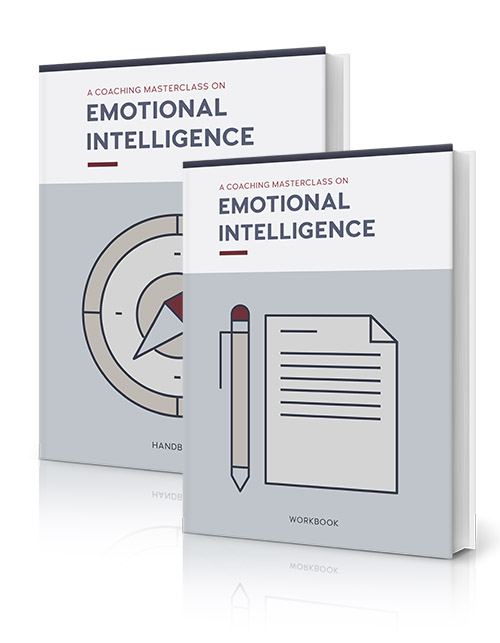Emotional Intelligence Masterclass
Emotional Intelligence Masterclass
June 14, 2019, Elaine Houston The Emotional Intelligence Masterclass© presents a comprehensive framework to integrate positive psychology to your work with clients. Packed full of exercises, resources and unique tools, you too can master one of the most fundamental well-being skills and apply science-based emotional intelligence to your ever-growing business. Developed with early career coaches and more experienced practitioners in mind, the Emotional Intelligence Masterclass is designed so that you can better generate your own workshops, programs, and treatment plans.
The Sailboat Metaphor
Metaphors are valuable tools in the teaching of scientific concepts. Bridging the gap between cognitive and affective learning, metaphors open up new ways to see the familiar from a different perspective and assist in the visualization of abstract ideas (Miller, 1979). The Sailboat metaphor serves as a structural framework throughout the Emotional Intelligence Masterclass. The metaphor consists of 8 elements creating a multi-faceted perspective of the self by comparing human functioning to a sailboat, its journey, and the potential challenges faced on that journey.
The Curriculum
Let’s take a look at the modules included in the Emotional Intelligence Masterclass, why they are integral to the training of emotional intelligence, and how they can be better understood through the sailboat metaphor.
Emotions
The significance of emotions for self-confidence and social commitment has been recognized by observers for as long as there have been written records (Izard, 1991). In this first module your clients will learn about emotions and how positive emotions have the potential to counteract the effects of negative emotions.
Emotional Intelligence
The skills involved in mastering emotional intelligence directly influence one’s ability to recognize, understand and manage emotions, to relate with others, to adapt to change and solve problems of a personal and interpersonal nature, and to efficiently cope with daily demands (Bar-On, 2006). This second module will steer you through the process of defining EI, understanding emotions in oneself and in others, the process of regulating emotions, and using those emotions to facilitate performance.
Emotional Awareness
Emotional awareness refers to the ability to recognize, pay attention to, and describe one’s own emotions, and those of other people, and is a crucial concept in human relational systems, for instance, between helping professionals and their clients (Killan, 2012). In this module your clients will learn the three fundamental characteristics of emotions, namely; bodily sensations, thoughts, and action tendencies. If we refer back to the sailboat metaphor, emotional awareness can be compared to the captain’s attention for the compass.
Beliefs About Emotions
Many people have implicit beliefs about emotions. They see their feelings as dangerous, and fear being overwhelmed if they allow themselves to express their feelings. Fears of intense feelings may lead people to actively attempt to avoid expressing or experiencing these feelings (Kennedy-Moore & Watson, 2001). In this module you and your clients will examine dysfunctional beliefs about emotions that operate outside conscious awareness, and strongly determine the relationship individuals have with their emotions.
Emotional Knowledge
While emotions can motivate us to approach or avoid, these responses may not necessarily contribute to well-being thus it is important to reflect upon emotions, rather than to act upon them automatically. In general, negative emotions are considered detrimental to motivation, self-regulation and self-efficacy (Rowe & Fitness, 2018). In this module you will address the connection between emotions and motivation and discuss the impact of extracting motivational information from emotional states on well-being.
Emotional Expression
Emotional expression has long been given a central role in the study and practice of psychology, with research indicating that the expression of emotions is vital for good mental and physical health (Smyth, 1998). Emotionally intelligent people are adept at the skill of naming and expressing their emotions. This module includes fundamental information regarding the most common forms of emotional expression, how emotional expression can improve well-being, reducing the negative consequences of avoidance, and increasing self-insight. If you would like to add emotional intelligence to your professional coaching arsenal check out the Emotional Intelligence Masterclass for more information.
References
Bar-On, R. (2006). The Bar-On model of emotional-social intelligence (ESI). Psicothema, 18 , 13-25. Izard, C.E. (1991). The Psychology of Emotions. New York: Springer. Kennedy-Moore, E. & Watson, J.C. (2001). How and When Does Emotional Expression Help?. Review of General Psychology, 5, 187-212. 10.1037/1089-2680.5.3.187. Killian, K. D. (2008). Helping till it hurts? A multi-method study of burnout, compassion fatigue and resilience in clinicians working with trauma survivors. Traumatology, 14, 31–44. MacIntosh, H. B., & Johnson, S. (2008). Emotionally focused therapy for couples and childhood sexual abuse. Journal of Marital and Family Therapy, 34, 298–315. Miller, G.A. (1979). Images and models, similes and metaphors. In A. Ortony ( Ed.), Metaphor and thought. Cambridge: Cambridge University Press, 202-250. Rowe, A. D., & Fitness, J. (2018). Understanding the Role of Negative Emotions in Adult Learning and Achievement: A Social Functional Perspective. Behavioral sciences, 8, 27. Smyth, J.M. (1998). Written emotional expression: effect sizes, outcome types, and moderating variables. Journal of Consulting and Clinical Psychology, 66, 174-184.
About The Author – Elaine Houston
Originally from Ireland, Elaine Houston is an independent business owner and Behavioral Science graduate with an honors degree from the University of Abertay, Scotland. After graduating, Elaine developed her passion for psychology through a range of avenues, focusing on consumer and small business psychology before going on to work within her local community as a learning and development officer. When she isn’t working, Elaine enjoys exploring creative outlets such as painting, drawing, and photography.
(55)


